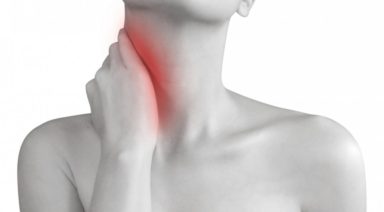How Important are Fats in a Healthy Diet

How important are fats, what forms should you be consuming and in what quantities? It was not long ago when then medical community was advocating the avoidance of all fat, even in the form of nuts or an avocado. Long gone are the days of neglect and dismissal when it comes to fat. We have made great progress drawing more clear lines between raw plant based sources that are good for you, even anti-aging, and those that are harmful such as cooked, animal based, and processed saturated and trans fats.
Bad fat
A deficiency of healthy fat runs prevalent throughout the modern day North American diet with the majority of people consuming too many of the detrimental bad fats including saturated fats in meat and dairy, and processed polyunsaturated fats or hydrogenated trans-fat from cooking oil and margarine used in processed foods. Consuming too many of these and not enough of the good fats contribute to stroke, heart attack, chronic inflammation, cognitive impairment, allergy, auto immune diseases and ultimately premature death.
Many of the oils we think are doing our bodies good are in fact causing further damage. The processing of oil can be the difference between good and bad. Some extraction methods for cheaper oils involve high heat, which can actually cause the oil to convert to trans fat. Other extraction methods use chemical solvents to separate the oil, usually done with low-grade oils.
Good Fat
The health benefits of consuming a sufficient amount of fat in the right forms and proper proportions has been shown to be immensely important in an endless number of areas impacting the state of body and mind. Among other things, it can strengthen the immune system, enhance brain and nervous system function such as mood, intelligence and behavior, greatly reduce cardiovascular disease, increase energy and performance, grow healthy skin, hair, and nails, regulate body weight, and improve organ and gland function.
Essential Fatty Acids
Omega-3 and Omega-6 are the two essential fatty acids (EFAs), “essential” meaning that the body cannot produce them — they must be ingested, by eating foods rich in EFA. EFAs are a type of fat known as long-chain polyunsaturated fatty acids and an important dietary component of overall health. Lending support to the healthy function of the cardiovascular, immune, and nervous systems, they also play an integral role in promoting cell health. Repair and regeneration of the cellular membrane is vital for keeping the body biologically young and enabling it to retain mobility and vitality throughout life. Contributing to our cells’ ability to receive nutrition and eliminate waste, EFAs help keep the cellular regeneration process moving. Our body’s ability to fight off infection and reduce inflammation is in part dependent on having an adequate supply of EFAs in the diet. In fact, healthy and efficient brain development in children has been linked to a diet rich in EFAs.
In addition, a balance of omega-3 and omega-6 EFAs are vital for skin health. Dry skin is commonly treated topically with a moisturizer, leaving the cause of the problem unaddressed. A diet with adequate EFAs will keep skin looking and feeling supple.
The present day American diet contains an excess of omega-6 by10 to 25 times with almost no omega-3. This imbalance among other things has been shown to contribute to stroke, heart attack, chronic inflammation, cognitive impairment, allergy and auto immune diseases. Excellent sources of omega-3 to help restore the natural balance are flaxseed and hemp oil as well as walnuts.
GLA
Gamma-linolenic acid (GLA) – is a difficult to attain omega-6 EFA with potent anti-inflammatory properties via production of hormone-like substances called eicosanoids. These help soothe skin, promote healing and regulate water loss. GLA’s anti-inflammatory properties expand blood vessels enabling better blood flow. It is known as an immune booster, cancer fighter, cholesterol reducer, arthritis reliever and supple, beautiful skin. Evening primrose, borage and hemp seed oils are the best sources of GLA.
MTCs
Another healthy yet underrated fat are Medium-chain triglycerides, or MCTs, found in large amounts in coconut oil. They are unique in that they are a form of saturated fat, yet have many health benefits. Their digestion is near effortless and, unlike other fat, MCTs are utilized in the liver and are easier on the pancreas, liver, and digestive system. Within moments of MCTs being consumed, they are converted by the liver to energy which make it an excellent source of energy during an intense workout or race. It has been shown to promote heart health, a strong immune system, a healthy metabolism, weight loss and youthful skin.
Phytonutrients
Healthy fats like raw unprocessed plant based oils also carry hundreds of phytonutrients such as chlorophyll, phytosterols, Carotenoids, Lignans (Phytoestrogens), tocopherols, tocotrienols, Flavonoids (Polyphenols) among others. Flax oil, for instance, when extracted properly can retain high levels of cancer fighting lignans, while hemp oil is rich in many phytonutients, in particular receiving a lot of attention for its high levels of immune boosting, alkalinizing, and cleansing chlorophyll.
Antioxidants
Plant based oils can also be a great source of antioxidants. Chlorophyll found in hemp oil has antioxidant like properties while berry seed oils are packed with antioxidants in a highly concentrated form. Raspberry, cranberry, and pomegranate seed oils are among the best. They can be hard to find in stores and are expensive, but they will deliver an extra dimension to a high-quality oil blend. A mixture containing all these oils is the ultimate essential fatty acid and antioxidant combination.
What to look for
A good fat should generally come from an organically grown plant based source with minimal processing to preserve their “raw”, nutrient rich state. Look for oils that are cold-pressed and have not undergone a distillation or purification process. Also try to avoid those that are exposed to heat and light as they can result in oxidation.
I use hemp oil as the base for salad dressings, sauces, shakes and many other recipes that do not require cooking at high heat. This is because hemp offers exceptional flavor and nutrition. Using only hemp oil as your primary oil source is a good way to go; however, a blend of about 80 percent hemp oil, 10 percent flaxseed oil, and 10 percent pumpkin seed oil is an optimal balance of essential fatty acids. Fats play a pivotal role in ones health and longevity.
What Your Food Cravings Really Mean

Ever had a craving you just can’t shake? Is there only one particular food that can always pull you out of an emotional rut? Have you ever wondered where the phrase“Eat your feelings” even comes from or what causes food cravings in the first place?
Of course, you have! You’re only human! Most people accept food cravings as a normal part of everyday life without really ever asking what these food cravings mean.” No two bodies are the same, and therefore no two reasons behind a specific food craving are the same. While some may be rooted in nutritional deficits – others may be a deeper signal from our Spirit echoing throughout our bodies.
Your mind, body, and Spirit communicate through an intricate language, which isn’t always easy to decipher. However, with a little effort, you can translate these signals and create the harmony needed for improved health.
For most, we’ve been taught to “overcome” our bodily cues with medicine or supplements. For example, when a person has a headache, they’re taught to reach for the Advil bottle rather than lying down and drinking lots of water. However, no matter how much you resent, ignore, or overlook your bodily cues – they’re not going to go away.
When looking at a type of food craving specifically, emotions are one of the most common causes of binge eating. Cravings that cause emotional eating tend to manifest themselves when we feel vulnerable. Rather than expressing fluctuations in our emotions, we tend to stuff them down with “comfort foods” that give our bodies a false sense of fulfillment. After a while, your body learns this routine, creating cravings that, when satiated, provide a short-term boost of chemical components. By deciphering the real meaning of your cravings, you can get insight as to what’s truly gnawing at you from within.
Gaining knowledge about what our cravings can mean, whether through personal research or consulting with a dietitian, may help us to reduce unhealthy habits and poor food choices that may lead to undesirable outcomes like weight gain and obesity. The following are the three most common food cravings and a starting point for you to decrypt what your mind, body, and Spirit are trying to tell you.





































